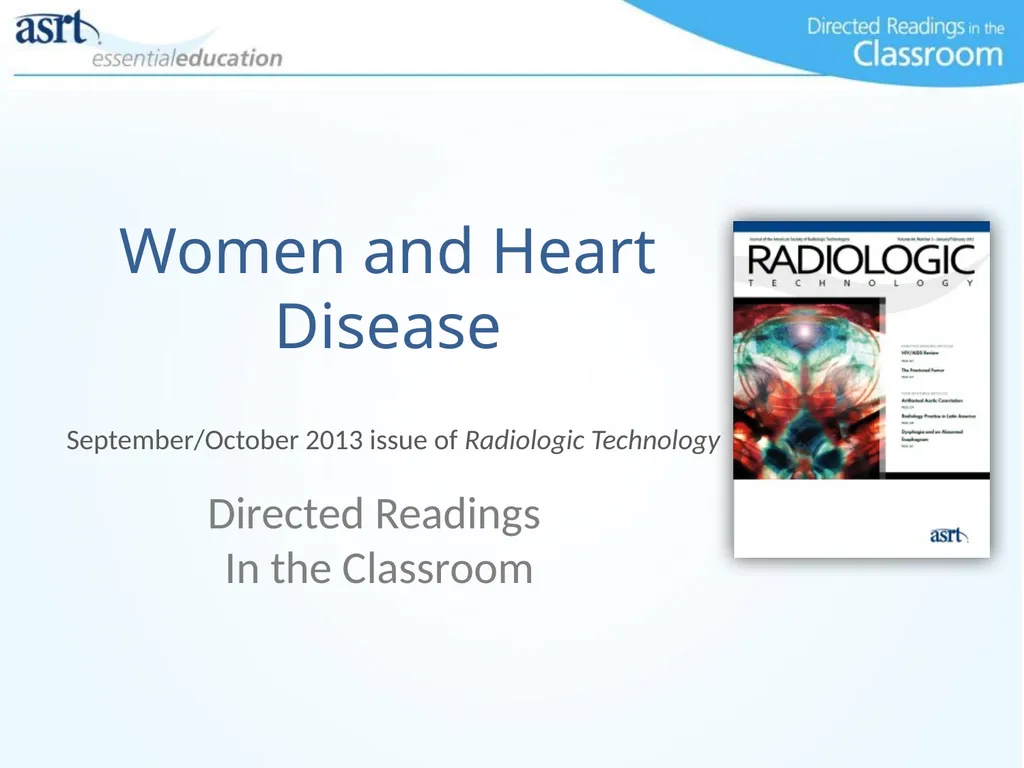
Women and Heart Disease Directed Readings In the
Author: faustina-dinatale | Published: 2025-08-16
Description: Women and Heart Disease Directed Readings In the Classroom SeptemberOctober 2013 issue of Radiologic Technology Instructions: This presentation provides a framework for educators and students to use Directed Reading content published in
Download Presentation
Download the PPT/PDF: Download
Transcript:
Loading transcript…